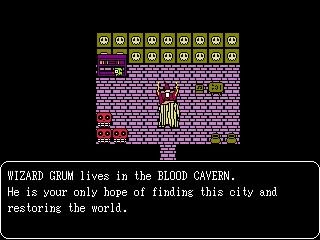
He will wear a royal robe, be presented with spurs and a sword, and hold the orb and scepter. The new king will be anointed with sacred oil, drawn from an eagle-shaped vessel, under a canopy held by four knights of the garter. Nonetheless, the transition will not be devoid of pageantry. Today, all three countries have significant enthusiasm for republicanism, and their leaders will have to carefully consider where respect shades into obeisance. Jawaharlal Nehru, India’s prime minister, traveled in a carriage to the abbey, as did the leaders of Australia, New Zealand, and Canada. In 1953, the young Elizabeth II was escorted by “the colonial contingents”-military forces from the territories she still ruled, such as Southern Rhodesia-as well as troops from the Commonwealth. Not only is he 73 years old, an heir who has waited seven decades to take the throne, but the procession to Westminster will surely reflect Britain’s diminished standing in the world. The coronation of King Charles III-if he does indeed adopt that name-will not have the same pomp. The foreword by the Duke of Gloucester, her uncle, emphasizes Elizabeth’s youth-“the new reign of a young Queen”-while the historian Arthur Bryant declares overleaf that “a coronation is a nation’s birthday.” Its opening page is stamped with gold and bears the coats of arms of Commonwealth countries, many of which no longer exist or were renamed upon independence: Aden (now part of Yemen) Bechuanaland (Botswana) Southern Rhodesia (Zimbabwe) Ceylon (Sri Lanka) Basutoland (Lesotho) Sarawak (now part of Malaysia) British Honduras (Belize) and Swaziland (Eswatini). The official souvenir brochure from when Elizabeth II was crowned, in 1953, is a snapshot of a lost world. And then the coronation of the next monarch. There will be a state funeral, with politicians and royals from around the world. The plan now in action is known by courtiers as “ London Bridge.” It began with special announcements on the BBC, the state broadcaster, which will now edit its programming for several days in case anything inappropriately irreverent or entertaining disrupts the official mourning period. so that his death could be announced “in the morning papers rather than the less appropriate evening journals.” Royal transitions are supposed to be orderly, seamless, well choreographed: In 1936, her grandfather George V was given a fatal dose of morphine at 11 p.m. What happens next? The Queen’s death has been the subject of rigorous planning for many years. During the pandemic, she took to fulfilling royal engagements over Zoom. She reigned so long that even her voice changed: The aristocratic vowels of the early 20th century-“lawst” for “lost,” “femileh” for “family”-gave way to a softer, less ostentatious accent. Very few Britons can remember life without her: Fewer than 150,000 people are older than 95 in this country.
#SUPER SPACE FUNERAL 4 DOWNLOAD DRIVER#
She was old enough to have trained as an army driver and mechanic in the last months of the Second World War. She was older than nylon, Scotch tape, and The Hobbit. She was six weeks older than Marilyn Monroe, three years older than Anne Frank, nine years older than Elvis Presley-all figures of the unreachable past. The second Elizabeth was born on April 21, 1926, and has reigned over Britain since 1952.

Read: Looking back on Queen Elizabeth’s 90 years Like the North Star in the night sky, she was a fixed point, something by which to orient yourself. Even as the world changed around her, she remained in place.

She steered the monarchy from the world of aristocracy and deference in which she was born, through the social liberation of the swinging 1960s and the bitter divisions of the ’80s and onward into a new millennium past a Scottish-independence referendum that would have broken apart 300 years of the union past Brexit, which sundered her kingdom from the European Union to her final days in a world of smartphones and Instagram. The past 70 years might not feel golden, but they were an age. The death of Queen Elizabeth II today ends the second Elizabethan era.

She had survived her mother’s execution, her half-sister’s jealousy, her cousin Mary’s plotting, and the antagonism of Europe’s great Catholic powers. Elizabeth I’s 45-year reign was a “golden age,” a course of events that no one would have predicted at her birth. “This morning, about three o’clock, her Majesty departed from this life, mildly like a lamb, easily like a ripe apple from the tree,” the lawyer John Manningham wrote in his diary. T he first Elizabethan era ended on March 24, 1603, when 69-year-old Queen Elizabeth I died in her sleep at Richmond Palace.


 0 kommentar(er)
0 kommentar(er)
